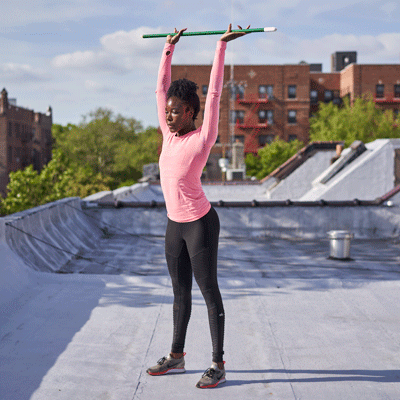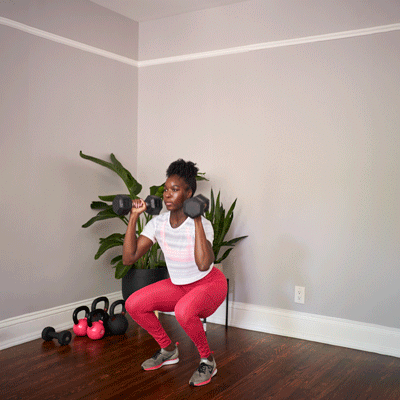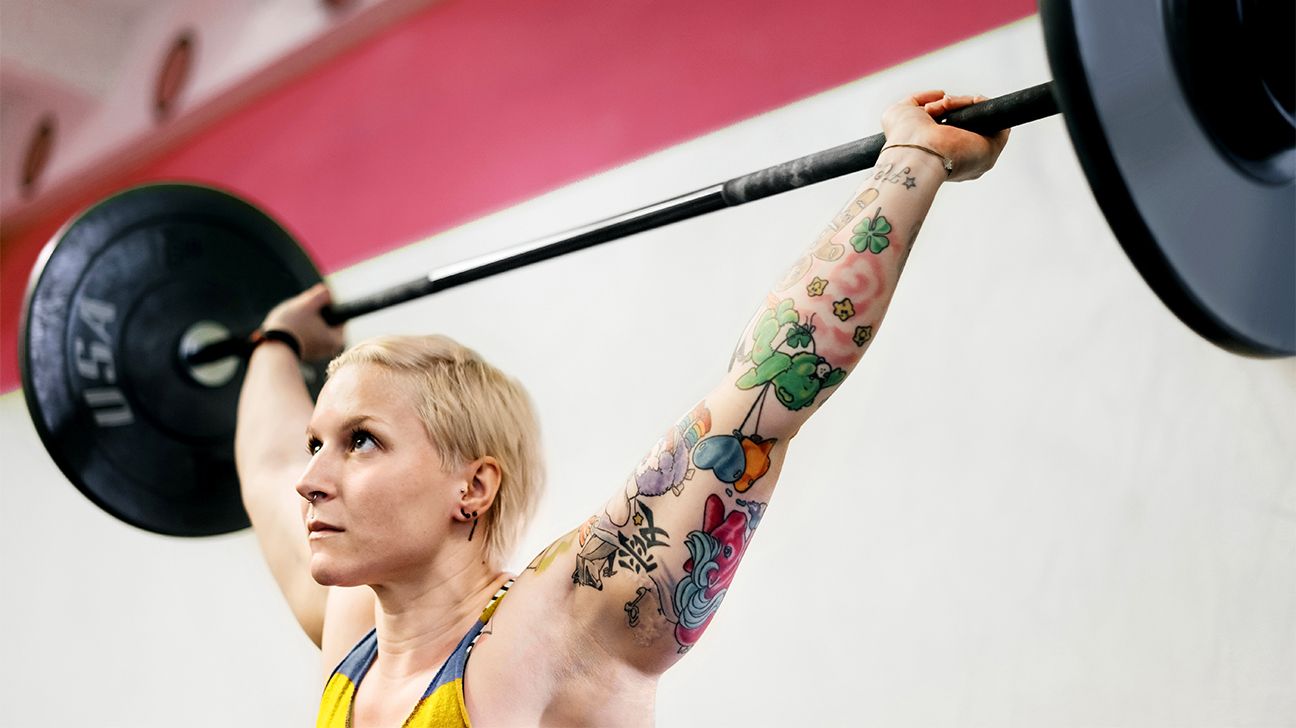Weightlifting works your muscles, maximizes your calorie burn, prevents brittle bones, and strengthens your heart. No matter how you look at it, it’s a win—but this move in particular is a gym-rat fave because it really does it all.
Thrusters challenge your strength and balance. They also work your legs, hips, arms, shoulders, and core. (Nice, right?)
Don’t let the name throw you off — thrusters aren’t related to the hip and pelvic thrusts of the ’80s and ’90s. (But if you wanna wear a retro leotard and tights, that’s up to you.)
You’ll need a barbell (or dumbbells) to start, but from there, it’s all about form and technique.
With thrusters, as with most other compound exercises, it’s all about form. Rushing through any complex move increases your chances of injury and could toss some of the benefits out the window.
Take your time until your thruster technique is fluid, smooth, and safe. Then you can pick up the pace and add weight a little at a time.
We’ve broken down thrusters so you can make sure your form is spot-on before you put those 20s on your barbell.
Square up and start thrustin’

Hint: Read all the way through the directions before you do your first thruster.
Stand with your feet hip-width apart, holding the barbell at your shoulders/collarbone in an overhand grip. Your elbows should be facing forward, completely underneath the bar.
Align your spine from the tip of your head to your tailbone and draw your shoulders down and back. Keep your knees slightly bent to maintain blood flow. You’re ready to begin.
- Tighten core and keep chest out as you lower into a squat with your thighs parallel to the floor. (If you can’t go that far, just squat as low as you can without pain.)
- Keep core engaged, chest high, and shoulders down. Let your knees turn out slightly for stability.
- Press heels and outsides of feet into the floor as you use your legs, core, and arms to “thrust” back into a standing position.
- Once you hit a standing position, keep pressing through heels, tighten glutes, and continue to use momentum to press the bar up and over your head.
- At the top of the thruster, straighten your arms. Your head should come forward, with ears in front of biceps.
- As you bring head back and align it with arms, slowly release arms and lower the bar back to your collarbone.
Congratulations — you’ve just done your first thruster. Start with 10 reps and see how you feel. Once 10 doesn’t feel like enough, you can add another set of 10 or start increasing the weight to intensify your workout.

Modification: Thrusters with dumbbells
Thrusters aren’t much different when using dumbbells. Your starting position is nearly identical, but instead of resting the dumbbells on your collarbone, rest them on your shoulders. As you hold the dumbbells, your elbows should point slightly forward.
From there, do the thrusters just as you would if you had a barbell.
Thrusters build the kind of muscle strength you’ll use in your everyday life. Ever had to pick up your Amazon packages off the porch or stack your books on the top shelf? Thrusters target the muscles you use for basic lifting and reaching motions.
Compound exercises like thrusters do more than make your muscles work hard. They get your heart pumping, giving you an extra cardiovascular hit. Plus, they work the small stabilizing muscles around your joints and major muscle groups. Those little guys may not seem important, but they keep your body balanced.
Every time you do a thruster, you’re working your:
- quads
- hamstrings
- glutes
- core (abdominals)
- back
- triceps
- shoulders
If you’re worried about bulking up, relax. Weightlifting works your muscles and promotes healthy weight management. Seriously: Muscle burns more calories than fat, so the more you build, the more fat you’ll scorch.
And having strong muscles makes you feel great, no matter your weight or body type.
- Practice with the barbell only until you feel comfortable with the movement of a thruster.
- Get vain. Watch yourself in a mirror or record yourself doing a thruster to check your form.
- Go slow. Keep your movements controlled. You can speed things up (slightly) once you’re more comfortable.
- Point your knees slightly out to better activate your glutes. If you’re using proper form, your legs and knees will do the majority of the lifting.
- Take advantage of your breathing. Inhale as you squat. Exhale as you press the bar overhead.
- Change it up. Add weight or try using kettlebells or sandbags to change your center of balance, challenging your muscles in new ways.
- Don’t get stuck at the bottom or top. Keep your movements fluid. You don’t want to lose momentum on this one.
- Your lower body should help you thrust the bar overhead. Your arms shouldn’t be doing it on their own.
- Your core gives you stability, so keep it engaged for the whole exercise.
- To avoid straining your back, don’t bring the bar in front of your body once you lift it overhead.
- Keep those heels down. You want an up-and-down motion, not a forward-and-back rocking from toes to heels.


